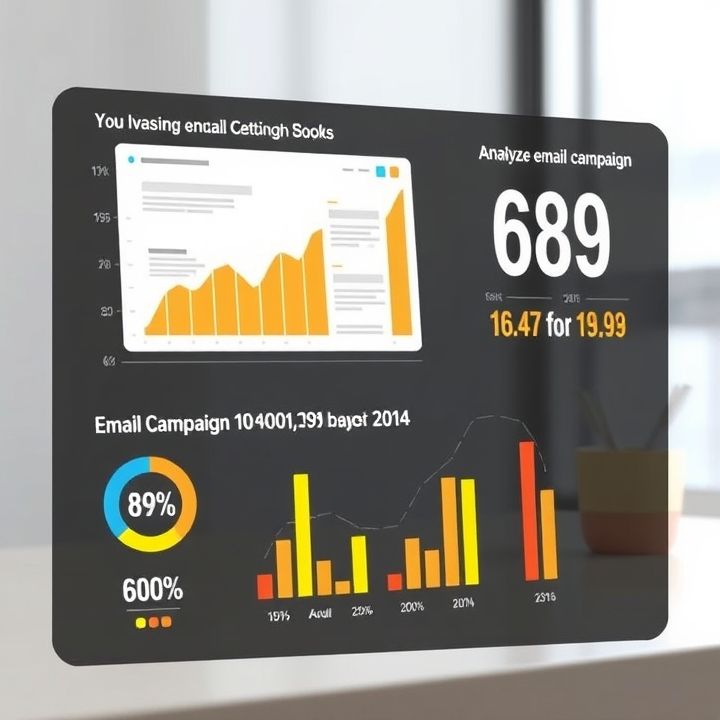Table of Contents
- Introduction
- Understanding User Segmentation: Definitions and Benefits
- Collecting and Analyzing Data: The Foundation of Effective Segmentation
- Identifying Key Segments: Criteria and Strategies
- Creating Personalized Offers: Tailoring Promotions to User Needs
- Choosing Appropriate Channels: Delivering Offers Where They Matter Most
- Conclusion
- Frequently Asked Questions
Introduction
In the competitive landscape of modern marketing, the quest for profitability hinges on precision and creativity. Imagine crafting offers so alluring that they are impossible to resist. How do businesses reach this level of engagement with their audiences? The answer lies hidden within the art of user segmentation—a powerful technique that can transform generic campaigns into extraordinary, personalized experiences.
The key to unlocking hidden profits is understanding distinct user needs and behaviors. With strategic segmentation, businesses can tap into new realms of success by deploying customized messages that resonate on a personal level. Consider this:
| Segment | Strategy | Potential |
|---|---|---|
| Loyal Customers | Exclusive offers | Increased retention |
| New Leads | Onboarding series | High conversion |
| Cart Abandoners | Remarketing emails | Reduced drop-off |
Master these strategies, and witness how the art of segmentation elevates your marketing efforts beyond expectation.
Understanding User Segmentation: Definitions and Benefits
User segmentation is the process of dividing a user base into distinct groups based on shared characteristics. These characteristics can include demographics, behavior, purchase history, or psychographic profiles. The aim is to identify clusters of users with similar needs or preferences to personalize marketing strategies and enhance customer engagement.
By implementing user segmentation, businesses can tailor their promotions and offers to meet the specific interests of each segment, increasing the relevance of their communications. This targeted approach leads to higher conversion rates and improved customer satisfaction. Furthermore, understanding these segments allows companies to allocate resources more effectively, focusing efforts on the most lucrative groups.
In addition to driving sales, user segmentation offers valuable insights into market trends and consumer behavior, aiding in product development and strategic planning. Ultimately, the use of detailed segmentation aids in building a more personalized and engaging experience for users, fostering brand loyalty and enhancing long-term business success.
Collecting and Analyzing Data: The Foundation of Effective Segmentation
Collecting and analyzing data serves as the cornerstone for effective user segmentation. The process begins with gathering comprehensive data about your users, which can include demographic information, online behaviors, purchase history, and more. Advanced analytics tools and software play a crucial role in aggregating this data from various sources such as websites, social media platforms, and customer relationship management systems.
Once data collection is completed, the next step involves analyzing these datasets to uncover patterns and tendencies. This can be achieved through the implementation of data mining techniques, machine learning algorithms, and statistical analysis. These methodologies allow businesses to identify specific user segments based on shared characteristics and behaviors.
Effective data analysis not only highlights what users want and need but also anticipates future trends and behaviors, enabling marketers to craft personalized and relevant promotions. This targeted approach increases engagement rates and drives conversions, as users are more likely to respond positively to offers that resonate with their specific preferences and requirements. Consequently, leveraging data in this analytical way ensures that businesses can deliver timely, personalized promotions to the right segments, ultimately optimizing marketing efforts and maximizing return on investment.
Identifying Key Segments: Criteria and Strategies
Identifying key segments is a crucial step in leveraging user segmentation effectively for targeted promotions or offers. To begin with, it’s important to establish clear criteria that define each segment. Demographic factors such as age, gender, income, and location are foundational criteria that many businesses start with. However, going beyond demographics to include psychographic elements like interests, lifestyles, and values can provide deeper insights. Behavioral data, such as purchasing history, browsing patterns, and brand interactions, adds another layer of specificity to the segmentation.
Strategies to identify these key segments often involve a mix of qualitative and quantitative research. Surveys and focus groups can provide valuable feedback on customer preferences and motivations. Analyzing web analytics and sales data helps in recognizing patterns and trends that might not be immediately apparent. Additionally, employing data mining techniques can reveal insights about customers that would otherwise remain hidden. With the rise of machine learning, AI-driven analytics tools are becoming indispensable for making sense of large datasets, enabling more precise segmentation.
Ultimately, the key to successful user segmentation lies in a business’s ability to continuously refine its segments based on new data, ensuring that promotions and offers remain relevant and compelling.
Creating Personalized Offers: Tailoring Promotions to User Needs
Creating personalized offers involves understanding the diverse preferences and behaviors of your user base to tailor promotions that meet individual needs. The first step is effective user segmentation, which divides your audience into smaller, more manageable groups based on shared characteristics such as demographics, purchasing habits, or engagement levels. Utilizing data analytics tools can help identify these segments by analyzing historical data and user interactions.
Once segments are defined, designing custom promotions becomes crucial. Consider using targeted messaging that resonates with each group’s specific interests or pain points. This could involve offering discounts on frequently purchased items or recommendations based on past behavior.
Additionally, timing plays a critical role in personalized offers. Deploying promotions at moments when users are most likely to engage—such as during birthdays or special occasions—can enhance effectiveness. Integrating feedback mechanisms will also allow for continuous refinement of strategies, ensuring offers remain relevant and compelling over time. By focusing on creating personalized experiences, businesses can not only increase conversion rates but also foster stronger brand loyalty.
Choosing Appropriate Channels: Delivering Offers Where They Matter Most
When it comes to effectively leveraging user segmentation for delivering targeted promotions or offers, choosing the appropriate channels is crucial. The key is to identify where your audience is most active and responsive. For instance, younger demographics might be more easily reached through social media platforms like Instagram or TikTok, while professionals might favor LinkedIn or email. Understanding the preferred medium of your segmented audience can significantly enhance the engagement rates of your promotions.
By analyzing user data, businesses can pinpoint the channels that yield the highest interaction for specific segments. It’s important to not only consider traditional channels like email and social media but also emerging ones like messaging apps and voice assistants. The goal is to deliver the right message, at the right time, through the right channel. This targeted approach not only improves the efficiency of marketing efforts but also enhances the customer experience by making them feel uniquely catered to.
Furthermore, integrating data analytics and customer feedback can help refine your strategies over time, ensuring that the chosen channels continue to align with user preferences and behaviors. In this way, businesses can create a dynamic and responsive marketing system that adapts to changes in user behavior and technological advancements.
Conclusion
In conclusion, mastering the art of user segmentation is crucial for businesses aiming to unlock hidden profits and offer irresistible promotions. By leveraging advanced data collection and analysis techniques, companies can identify distinct user groups, allowing for highly targeted marketing strategies that resonate with individual preferences and needs. This personalized approach not only enhances customer engagement and satisfaction but also drives higher conversion rates and maximizes returns on investment. Additionally, by continuously refining segmentation criteria and choosing the appropriate communication channels, businesses can ensure that their offers remain relevant and impactful. Ultimately, effective user segmentation is about understanding and anticipating customer needs, which is key to fostering long-term brand loyalty and sustaining business growth in an increasingly competitive market. By embracing these strategies, businesses can create a more dynamic, responsive, and personalized customer experience that stands out in today’s market.

